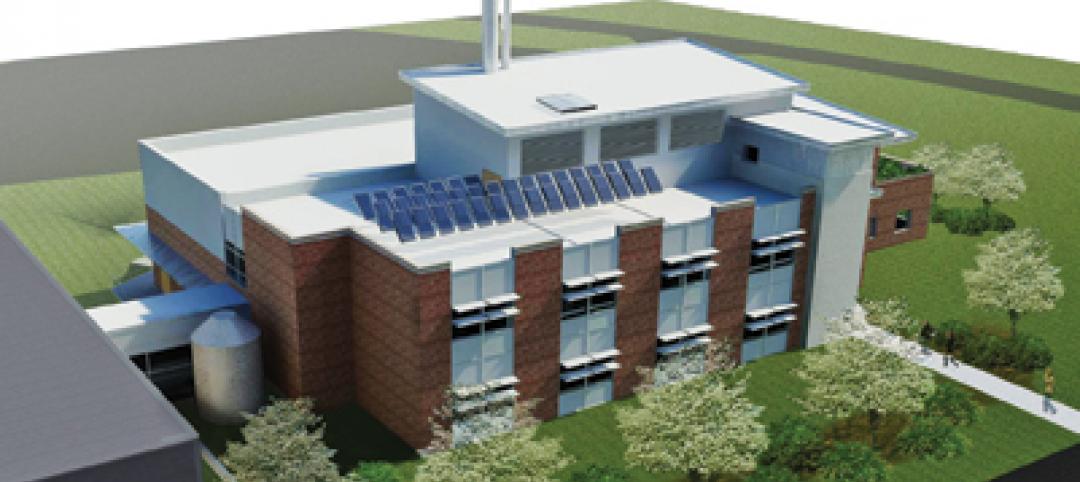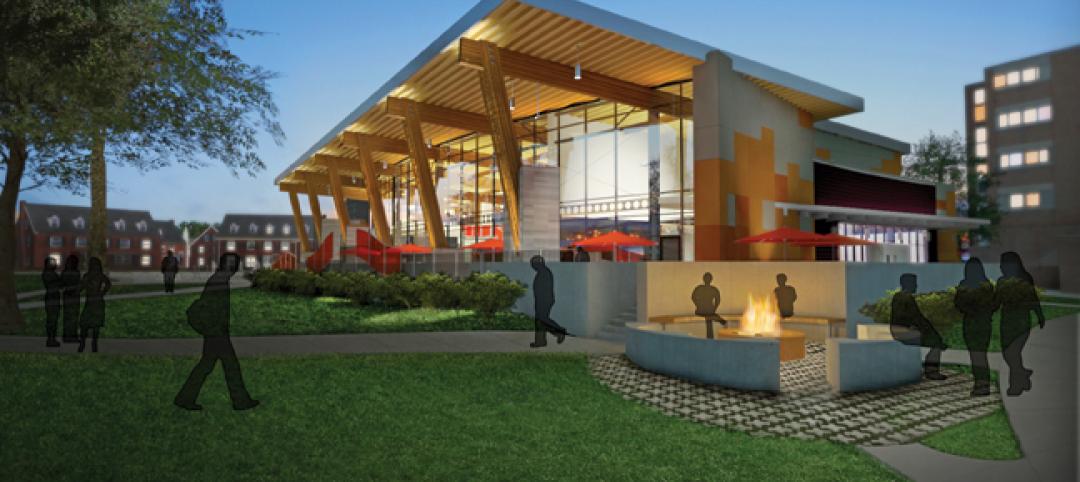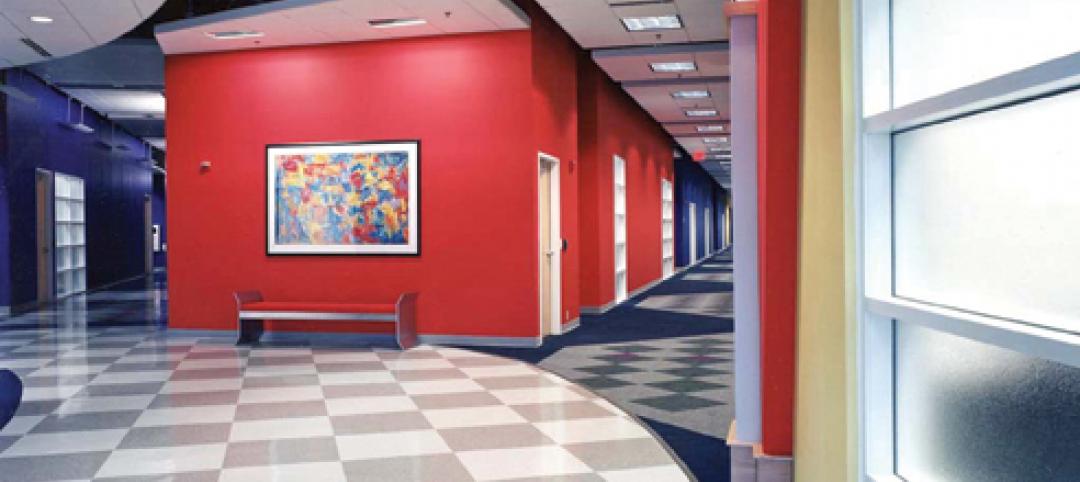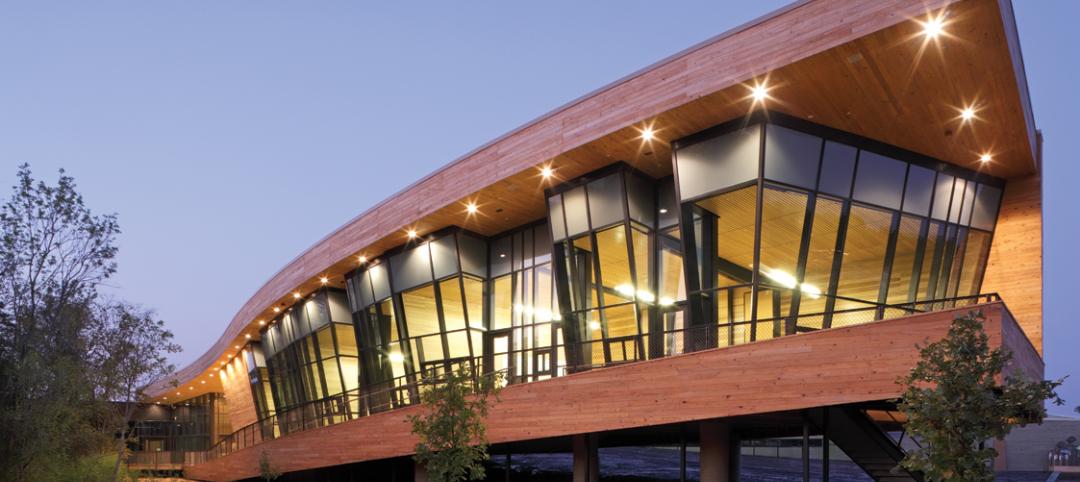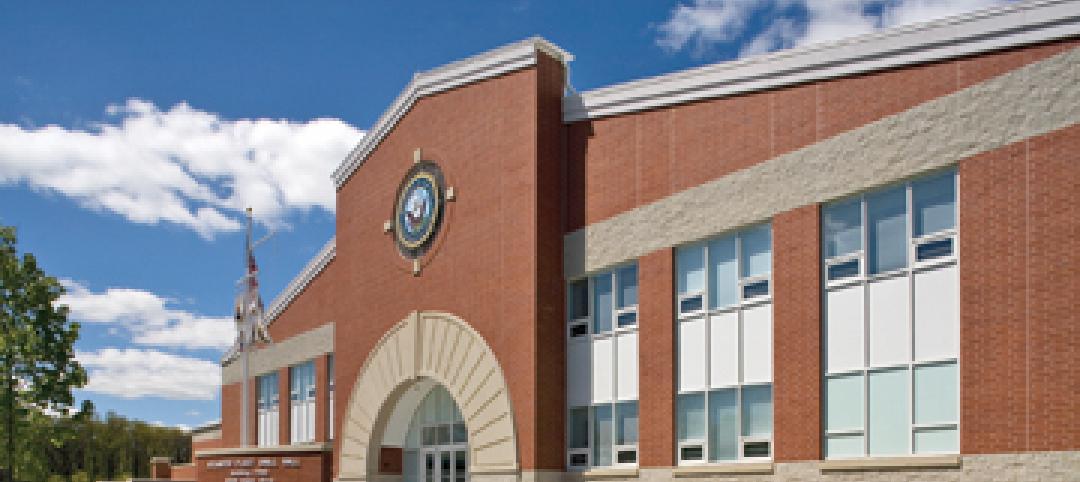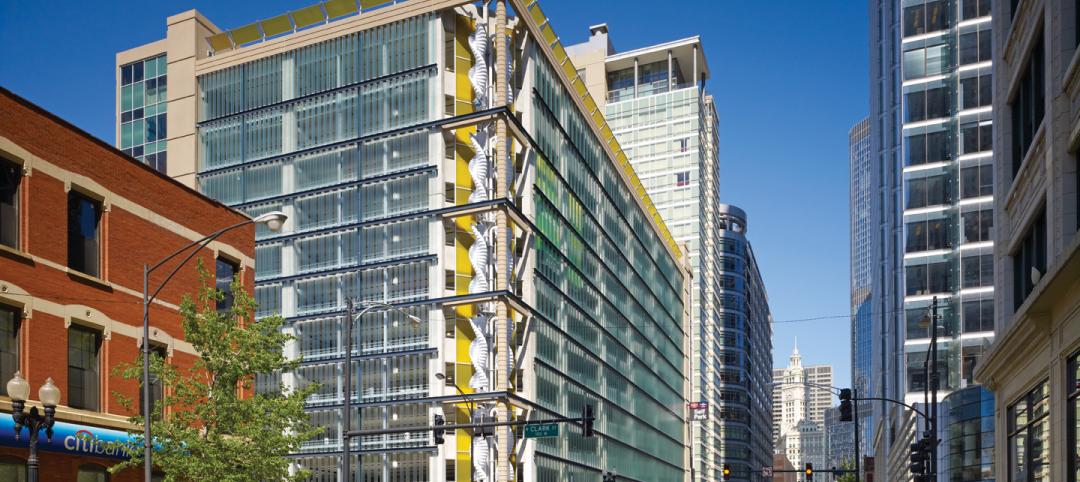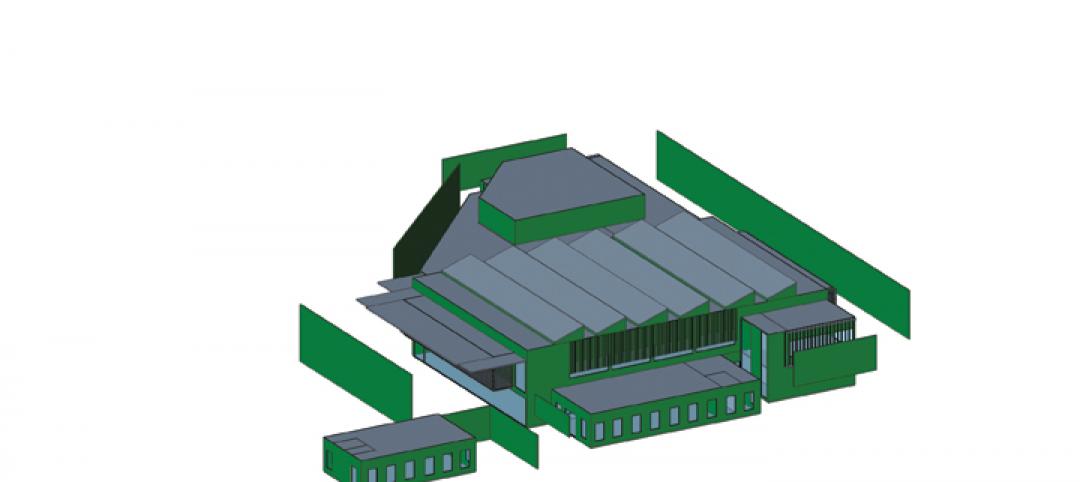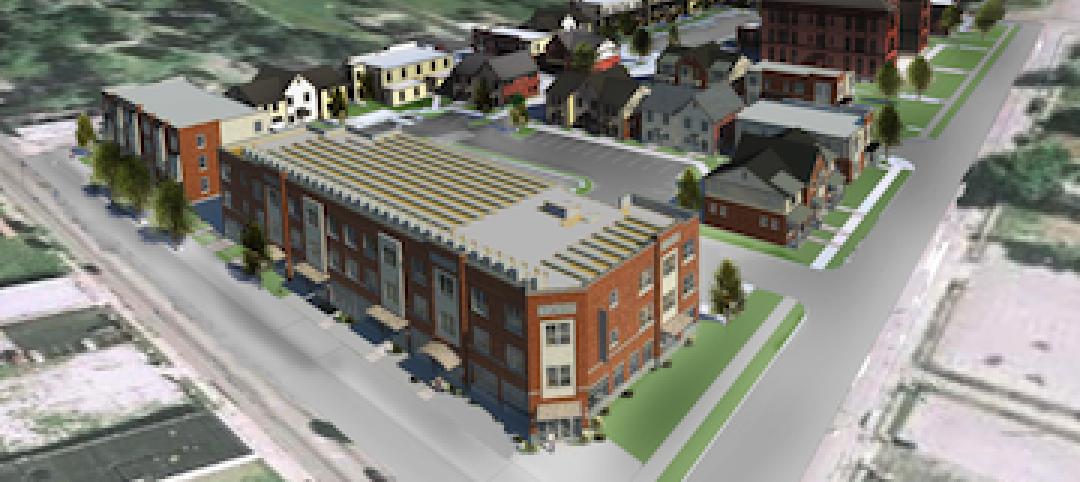FARIBAULT, Minn.--(BUSINESS WIRE)--Saint-Gobain, one of the world’s largest glass and construction material manufacturers, is making a strategic equity investment in SAGE Electrochromics to make electronically tintable “dynamic glass” an affordable, mass-market product, ushering in a new era of energy-saving buildings.
The announcement takes place one year after Saint-Gobain launched its consolidated advanced glazing division and its QUANTUM GLASS™ brand. The strategic partnership with SAGE further solidifies Saint-Gobain’s technological leadership in the glazing marketplace, where imaginative eco-friendly materials are opening up new possibilities for architecture and design.
Under terms of the agreement, Saint-Gobain will contribute its electrochromic glass intellectual property (IP) to SAGE, and all manufacturing and R&D efforts will be merged. SAGE will manufacture the next-generation dynamic glass for both companies’ product lines at its facilities in Faribault, Minn. The two companies currently have the most proven electrochromic products on the market, with more than 100 patents and 40 years combined R&D experience. Two senior members of Saint-Gobain’s management team – Jean-Pierre Floris and Francois-Xavier Moser – will join SAGE’s board of directors.
The funding will enable construction of the world’s largest and most advanced electrochromic glass manufacturing facility, to be located in Faribault, Minn. The project began this month and will cost around $135 million, excluding working capital. The new plant will manufacture much larger sheets of glass that have been previously unavailable in the market, opening up 95 percent of all global building opportunities. The glass will be produced in high volumes and at an affordable price point.
“This partnership marks the beginning of a new revolution in the glass industry for the habitat,” said Jean-Pierre Floris, Senior Vice-President, Director, Innovative Materials Sector at Saint-Gobain. “Thanks to the partnership between Saint-Gobain and SAGE, we now offer advanced electrochromic glazing which is both environmentally friendly and competitively priced. SAGE and Saint-Gobain, two companies who are responsible for some of the most prestigious buildings in the world, will now provide the most efficient electrochromic glazing on a global scale through the SAGE and QUANTUM GLASS certified distribution networks.”
SAGE has manufactured and installed SageGlass® in hundreds of buildings over the past five years including commercial, institutional and high-end residential applications. The high volume, low cost production of SageGlass will enable architects to create the world’s most iconic glass solutions - comfortable and aesthetically pleasing buildings that dramatically reduce energy consumption and greenhouse gas emissions.
“Until now, electrochromic glass has largely been an emerging product, not widely deployed due to cost and manufacturing logistics. This alliance will trigger economies of scale, making possible a new era of high-performance windows that are both eco-friendly and economically compelling,” said John Van Dine, SAGE Founder and CEO. “We are pleased to be partnering with such a globally prestigious company as Saint-Gobain. We are combining the best science and capabilities of the world’s two leading technologies to deliver a product with higher performance and quality than ever before, at one-half the cost of today’s electrochromic products. This alliance will dramatically accelerate global adoption of this game-changing technology in both commercial and residential markets.”
SAGE will remain an independent company and will market its SageGlass products in North America. Saint-Gobain will distribute the SageGlass technology under the QUANTUM GLASS brand in Europe. The two companies will work together to develop a marketing strategy for Asia and the rest of the world, leveraging Saint-Gobain’s vast global distribution partnerships. SAGE and Saint-Gobain will also look to forge partnerships with large strategic players to further accelerate the widespread deployment of electrochromic products. They will also work together to create efficiencies in the global distribution network that responsibly reduce carbon footprint.
The U.S. Department of Energy recently conditionally awarded SAGE more than $72 million in DOE loan guarantees. According to U.S. Energy Secretary Steven Chu, “SageGlass, which can be used in windows, skylights and curtain walls, allows natural light to come through while controlling unwanted solar heat and glare. This technology can help transform windows and skylights from energy liabilities to energy savers. In fact, Lawrence Berkeley National Lab, a DOE facility, believes that SageGlass has the potential to reduce building heating and air conditioning equipment size by up to 25 percent, which would cut construction costs. SageGlass could also reduce the overall cooling loads for commercial buildings up to 20 percent by lowering peak-power demand and may reduce lighting costs by up to 60 percent.”
Barclays Capital acted as financial advisor to SAGE in the transaction. Also participating in this investment round was TIAA CREF. Previous investors in SAGE include Good Energies, a leading global investor in the renewable energy and energy efficiency industries and NV Bekaert SA, a global technological leader in advanced metal transformation and advanced materials and coatings, and a market leader in drawn wire products and applications.
Details about new plant and electrochromic technology
SAGE broke ground on the new 300,000-square-foot manufacturing facility in late October 2010. The project is expected to create 160 additional full-time green manufacturing and technology jobs, and more than 200 construction jobs. The plant will be able to manufacture glass in sizes up to 5 feet by 10 feet (1.5 X 3.5 m2) with an initial annual production capacity of 4 million square feet. The companies intend to launch the first merged-technology electrochromic product with high-volume shipments beginning in mid-2012.
Electrochromic glass changes from a clear state to a tinted state. It can be integrated with a building management system or activated at the push of a button to control the sunlight and heat that enters and leaves a building. It significantly reduces energy consumed for air conditioning, heating and lighting, while enhancing occupant comfort and well-being by providing daylighting and eliminating glare. This creates a far more appealing design aesthetic standard for the architectural industry compared to the current prevalent use of mechanical window shades and blinds and other building add-ons.
About SAGE Electrochromics, Inc.
SAGE Electrochromics, founded in 1989, is the world leader in the development, manufacture and international commercialization of electronically tintable glass – branded SageGlass - for the building industry. For more information visit: www.sage-ec.com.
About Saint-Gobain in North America
Saint-Gobain Corporation, based in Valley Forge, Pennsylvania, is the holding company for Saint-Gobain’s U.S. and Canadian operations. The company has over 330 locations in North America, and approximately 19,000 employees. Saint-Gobain businesses in North America include CertainTeed, North America’s leading brand of exterior and interior building products, and Norton Abrasives, the largest global manufacturer and supplier of performance engineered abrasives. In the United States and Canada, Saint-Gobain reported sales of approximately $6.8 billion in 2009. For information about Saint-Gobain in North America, visit www.saint-gobain-northamerica.com.
About Saint-Gobain
Saint-Gobain, the world leader in the habitat and construction markets, designs, manufactures and distributes building materials, providing innovative solutions to the challenges of growth, energy efficiency and environmental protection. With 2009 sales of €37.8 billion, Saint-Gobain operates in 64 countries and has more than 190,000 employees. For more information about Saint-Gobain, please visit www.saint-gobain.com.
About QUANTUM GLASS
Created in 2009 as the new advanced glazing brand of Saint-Gobain, QUANTUM GLASS is unique in the marketplace in offering six fully integrated, energy-efficient glass technologies, a dedicated international network of certified sales and installation professionals and a guarantee of project security and customer service. QUANTUM GLASS’s mission is to facilitate the creation of cutting-edge architectural projects and products that excite emotion and push back the boundaries of modern living. www.quantumglass.com
Related Stories
| Nov 3, 2010
Virginia biofuel research center moving along
The Sustainable Energy Technology Center has broken ground in October on the Danville, Va., campus of the Institute for Advanced Learning and Research. The 25,000-sf facility will be used to develop enhanced bio-based fuels, and will house research laboratories, support labs, graduate student research space, and faculty offices. Rainwater harvesting, a vegetated roof, low-VOC and recycled materials, photovoltaic panels, high-efficiency plumbing fixtures and water-saving systems, and LED light fixtures will be deployed. Dewberry served as lead architect, with Lord Aeck & Sargent serving as laboratory designer and sustainability consultant. Perigon Engineering consulted on high-bay process labs. New Atlantic Contracting is building the facility.
| Nov 3, 2010
Dining center cooks up LEED Platinum rating
Students at Bowling Green State University in Ohio will be eating in a new LEED Platinum multiuse dining center next fall. The 30,000-sf McDonald Dining Center will have a 700-seat main dining room, a quick-service restaurant, retail space, and multiple areas for students to gather inside and out, including a fire pit and several patios—one of them on the rooftop.
| Nov 2, 2010
11 Tips for Breathing New Life into Old Office Spaces
A slowdown in new construction has firms focusing on office reconstruction and interior renovations. Three experts from Hixson Architecture Engineering Interiors offer 11 tips for office renovation success. Tip #1: Check the landscaping.
| Nov 2, 2010
Cypress Siding Helps Nature Center Look its Part
The Trinity River Audubon Center, which sits within a 6,000-acre forest just outside Dallas, utilizes sustainable materials that help the $12.5 million nature center fit its wooded setting and put it on a path to earning LEED Gold.
| Nov 2, 2010
A Look Back at the Navy’s First LEED Gold
Building Design+Construction takes a retrospective tour of a pace-setting LEED project.
| Nov 2, 2010
Wind Power, Windy City-style
Building-integrated wind turbines lend a futuristic look to a parking structure in Chicago’s trendy River North neighborhood. Only time will tell how much power the wind devices will generate.
| Nov 2, 2010
Energy Analysis No Longer a Luxury
Back in the halcyon days of 2006, energy analysis of building design and performance was a luxury. Sure, many forward-thinking AEC firms ran their designs through services such as Autodesk’s Green Building Studio and IES’s Virtual Environment, and some facility managers used Honeywell’s Energy Manager and other monitoring software. Today, however, knowing exactly how much energy your building will produce and use is survival of the fittest as energy costs and green design requirements demand precision.
| Nov 2, 2010
Yudelson: ‘If It Doesn’t Perform, It Can’t Be Green’
Jerry Yudelson, prolific author and veteran green building expert, challenges Building Teams to think big when it comes to controlling energy use and reducing carbon emissions in buildings.
| Nov 2, 2010
Historic changes to commercial building energy codes drive energy efficiency, emissions reductions
Revisions to the commercial section of the 2012 International Energy Conservation Code (IECC) represent the largest single-step efficiency increase in the history of the national, model energy. The changes mean that new and renovated buildings constructed in jurisdictions that follow the 2012 IECC will use 30% less energy than those built to current standards.
| Nov 1, 2010
Sustainable, mixed-income housing to revitalize community
The $41 million Arlington Grove mixed-use development in St. Louis is viewed as a major step in revitalizing the community. Developed by McCormack Baron Salazar with KAI Design & Build (architect, MEP, GC), the project will add 112 new and renovated mixed-income rental units (market rate, low-income, and public housing) totaling 162,000 sf, plus 5,000 sf of commercial/retail space.


